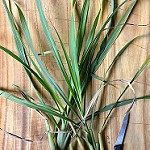Essential oil of the Month: Lemongrass – Insights by Charene Beauty Salon
Essential oil of the month: Lemongrass!
Cymbopogon, more commonly known as lemongrass, is a genus of herbaceous plants native to Asia, Africa, Australia, and various tropical islands. Primarily, lemongrass is valued as a culinary herb in Asian cuisines, cherished for its bold citrus flavor with subtle notes of mint and ginger. Moreover, it holds a long-standing place in Indian traditional medicine as a popular healing herb.
In addition, lemongrass makes an attractive garden plant, forming tall, grassy clumps that grow 3 to 5 feet high. Its striking appearance often rivals that of ornamental grasses, making it a versatile choice for landscaping. Whether you’re harvesting its bulbous stem bases for their lemony zest or clipping the leaves to infuse teas and broths, lemongrass serves multiple purposes.
Furthermore, its essential oil is widely used as a natural pesticide and preservative. Notably, research has also shown that lemongrass oil possesses strong antifungal properties, adding to its growing list of benefits.

Lemongrass essential oil is known for its wide range of effects—it is stimulating, relaxing, soothing, and balancing all at once.
Interestingly, the chemical composition of lemongrass essential oil can vary depending on its geographical origin. Factors such as soil quality, climate conditions, and cultivation practices all play a significant role. Typically, the oil contains hydrocarbon terpenes, alcohols, ketones, esters, and is primarily composed of aldehydes—mainly citral, which makes up about 70–80% of the oil.
Nutritional Content
In addition to its aromatic benefits, lemongrass essential oil is rich in essential vitamins, including:
-
Vitamin A
-
Vitamin B1 (Thiamine)
-
Vitamin B2 (Riboflavin)
-
Vitamin B3 (Niacin)
-
Vitamin B5 (Pantothenic Acid)
-
Vitamin B6
-
Folate
-
Vitamin C
Moreover, it also contains a variety of important minerals, such as:
-
Magnesium
-
Phosphorus
-
Manganese
-
Copper
-
Potassium
-
Calcium
-
Zinc
-
Iron
Key Extraction and Properties
-
Common Method of Extraction: Steam Distillation
-
Plant Part Used: Grass
-
Color: Pale Yellow to Vivid Yellow
-
Consistency: Thin
-
Perfumery Note: Top
-
Strength of Aroma: Strong
-
Aromatic Description: Fresh, lemony, earthy
Popular Uses of Lemongrass Essential Oil
Lemongrass essential oil is prized for its diverse therapeutic benefits. For instance, it is widely used to help with:
-
Muscular aches, pains, and headaches
-
Gastrointestinal disorders and indigestion
-
Reducing physical and mental exhaustion, anxiety, and depression
-
Boosting self-esteem, confidence, hope, and mental clarity
Additionally, it offers potent antimicrobial and antifungal properties, making it useful for:
-
Healing wounds
-
Fighting acne
-
Lowering fevers
-
Acting as a natural antiseptic
Other benefits include:
-
Astringent qualities
-
Relief from flatulence
-
Stimulating urine flow and lactation
-
Supporting hair growth
-
Serving as an insect repellent
-
Providing sedative and calming effects
Personally, lemongrass is one of my favorite essential oils—not just for its fragrance, but for its incredible versatility and wellness benefits.
Looking for Beauty Parlour Near Me – Charene Beauty Services





